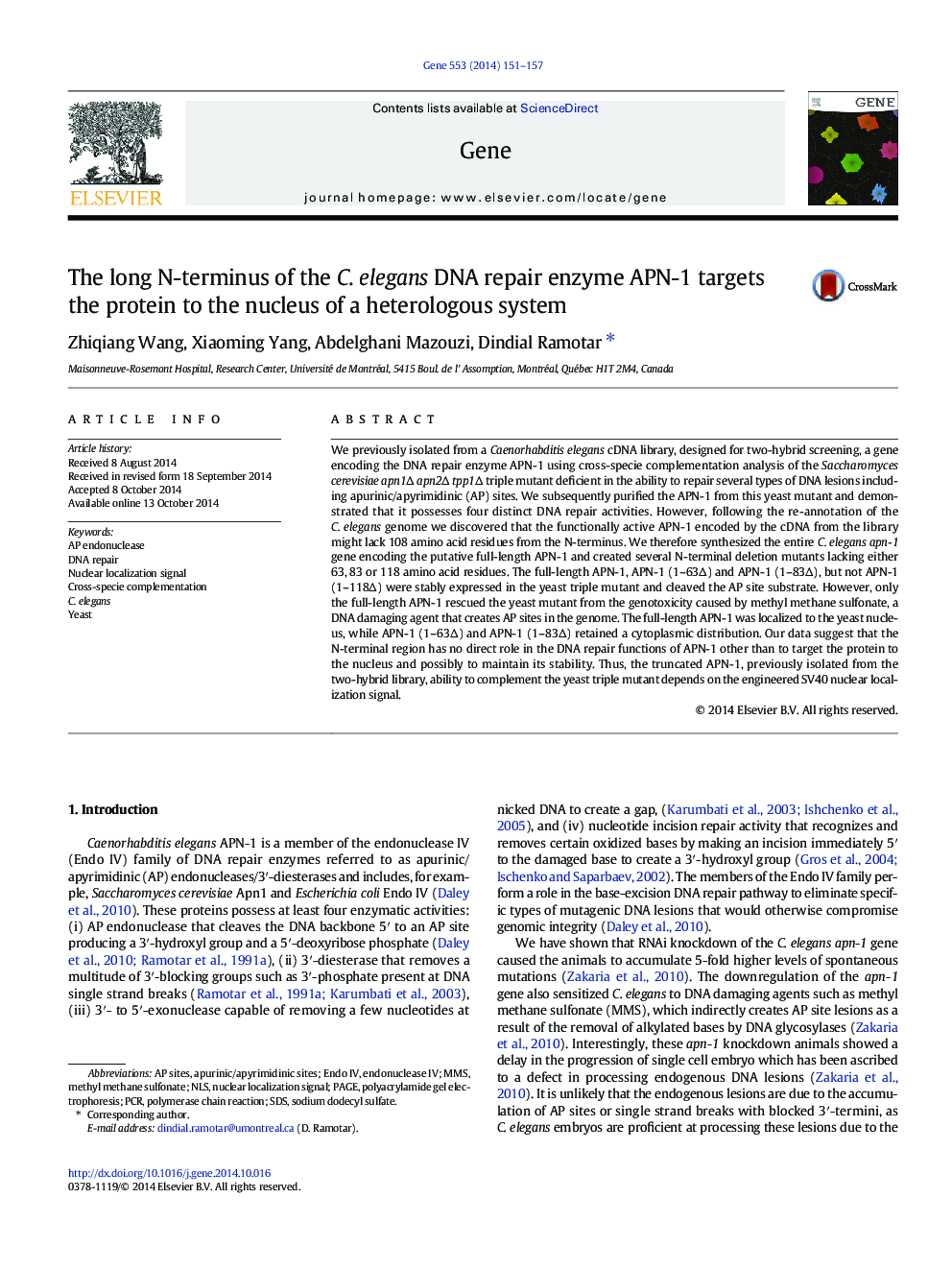| کد مقاله | کد نشریه | سال انتشار | مقاله انگلیسی | نسخه تمام متن |
|---|---|---|---|---|
| 2816073 | 1159913 | 2014 | 7 صفحه PDF | دانلود رایگان |

• The N-terminal of APN-1 encompassing amino acid residues 1–118 is not involved in DNA repair.
• Amino acid residues 1 to 63 of APN-1 carry a signal to target APN-1 to the nucleus.
• Embedded within residues 83 to 118 is a potential signal that stabilizes APN-1.
We previously isolated from a Caenorhabditis elegans cDNA library, designed for two-hybrid screening, a gene encoding the DNA repair enzyme APN-1 using cross-specie complementation analysis of the Saccharomyces cerevisiae apn1∆ apn2∆ tpp1∆ triple mutant deficient in the ability to repair several types of DNA lesions including apurinic/apyrimidinic (AP) sites. We subsequently purified the APN-1 from this yeast mutant and demonstrated that it possesses four distinct DNA repair activities. However, following the re-annotation of the C. elegans genome we discovered that the functionally active APN-1 encoded by the cDNA from the library might lack 108 amino acid residues from the N-terminus. We therefore synthesized the entire C. elegans apn-1 gene encoding the putative full-length APN-1 and created several N-terminal deletion mutants lacking either 63, 83 or 118 amino acid residues. The full-length APN-1, APN-1 (1–63Δ) and APN-1 (1–83Δ), but not APN-1 (1–118Δ) were stably expressed in the yeast triple mutant and cleaved the AP site substrate. However, only the full-length APN-1 rescued the yeast mutant from the genotoxicity caused by methyl methane sulfonate, a DNA damaging agent that creates AP sites in the genome. The full-length APN-1 was localized to the yeast nucleus, while APN-1 (1–63Δ) and APN-1 (1–83Δ) retained a cytoplasmic distribution. Our data suggest that the N-terminal region has no direct role in the DNA repair functions of APN-1 other than to target the protein to the nucleus and possibly to maintain its stability. Thus, the truncated APN-1, previously isolated from the two-hybrid library, ability to complement the yeast triple mutant depends on the engineered SV40 nuclear localization signal.
Journal: Gene - Volume 553, Issue 2, 15 December 2014, Pages 151–157